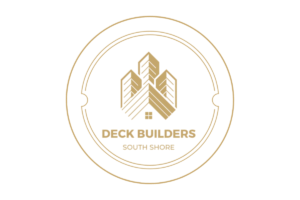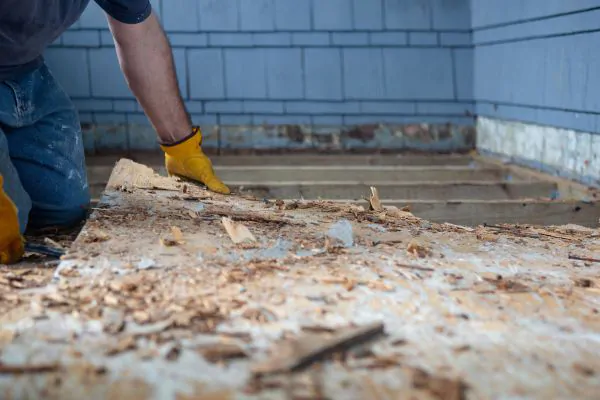
Deck rot is a type of wood decay that can occur when moisture is present, and the wood is not adequately protected. It can compromise the structural integrity of your deck and even make it unsafe to use.
This blog will discuss everything you need to know about deck rot: its definition, causes, signs, and how to prevent and fix it. So let’s jump in and learn how to protect your deck from the damaging effects of deck rot.
Causes of Deck Rot
One of the main causes of deck rot is moisture, which can seep into the wood and cause it to decay. Here are some ways moisture can infiltrate your deck:
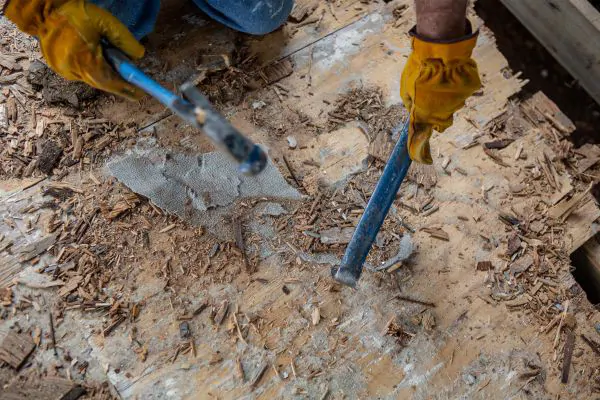
Wet Weather
There are three ways moisture can get into decks: rain and snow, humidity, and ground contact.
Rain and snow are two of the most common sources of moisture that can cause deck rot. Water can accumulate on your deck surface and seep into the wood, leading to rot. Aside from rain and snow, high humidity levels can cause wood to absorb moisture. Another common cause of deck rot is ground contact. If your deck posts or beams are in direct contact with the ground, they can absorb moisture and become susceptible to decay.
Lack of Maintenance
Regular maintenance includes sealing your deck with a water-resistant sealant and cleaning it regularly to remove any dirt or debris that can trap moisture. If you’re not sure how to properly maintain your deck, consult a professional or refer to manufacturer guidelines.
Insect Infestation
Lastly, insect infestation is another factor that can contribute to deck rot. Certain types of insects, such as termites and carpenter ants, can eat away at your deck and cause structural damage.
Identifying the Main Causes of Deck Rot
If you’ve discovered that your deck is experiencing rot, it’s important to address the issue as soon as possible to prevent further damage. Here are the steps you should take to fix deck rot:
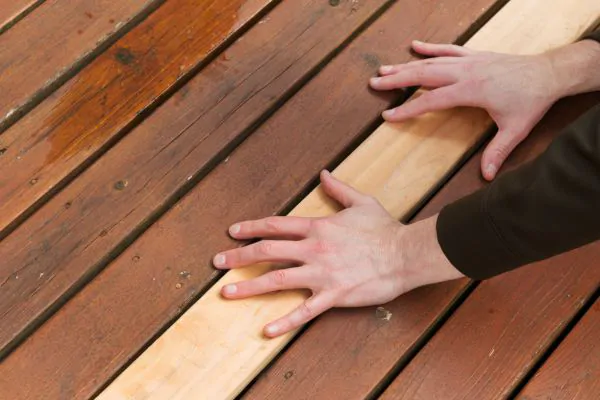
Assessing the Damage
The first step in fixing deck rot is to assess the extent of the damage. Determine which boards and structural components are affected by rot and the severity of the rot. If the damage is minor, you may be able to repair the affected areas without replacing the entire deck. However, if the rot has spread extensively, you may need to replace larger portions of the deck.
Replacing Rotted Boards
If your deck boards are rotting, you’ll need to remove them and replace them with new ones. Use a circular saw to cut the rotted boards and remove them from the deck. Once the damaged boards have been removed, measure the space and cut the replacement boards to size. Use screws to secure the new boards in place.
Reinforcing Structural Components
If the rot has affected the structural components of your deck, such as the joists or beams, you’ll need to reinforce these areas. This may involve sistering new joists alongside the existing ones or adding new beams to support the weight of the deck.
Sealing and Staining
Once the damaged areas have been repaired or replaced, it’s important to seal and stain your deck to prevent future damage. Apply a water-resistant sealant to the entire deck, including the newly repaired areas. This will help to prevent moisture from penetrating the wood and causing further rot.
Related Post: Deck Care 101:How Often Should You Reseal Your Deck?
Bottom Line
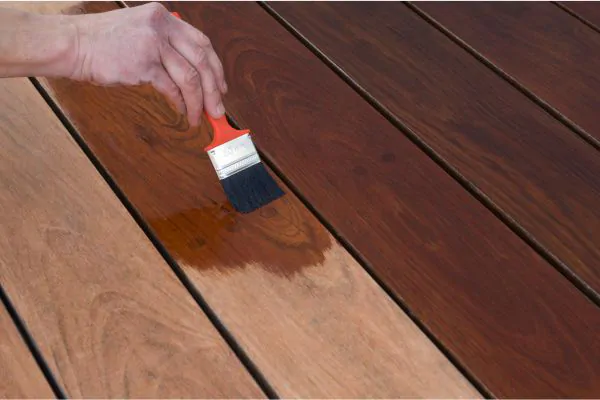
Deck rot is a common problem that can occur as a result of various factors such as moisture, lack of maintenance, and insect infestation. It’s important to identify the signs of deck rot early on and take necessary measures to prevent further damage. With proper maintenance and care, you can enjoy your deck for many years to come. Call the professionals from South Shore Deck Builders today for a professionally-fixed deck rot for you to enjoy!
